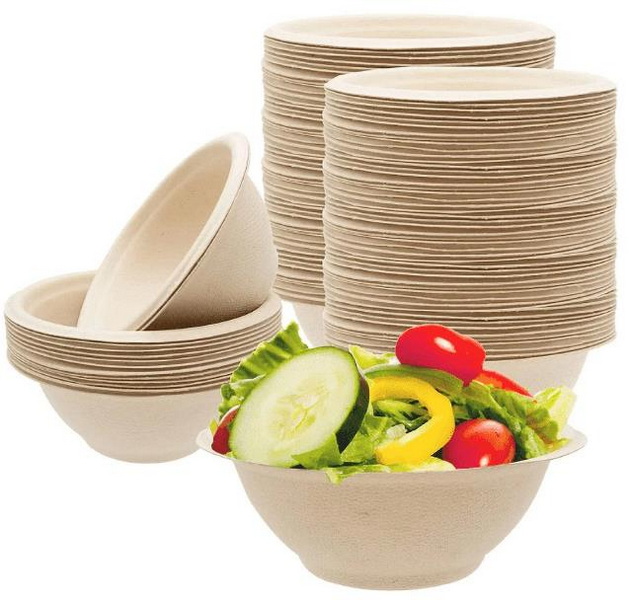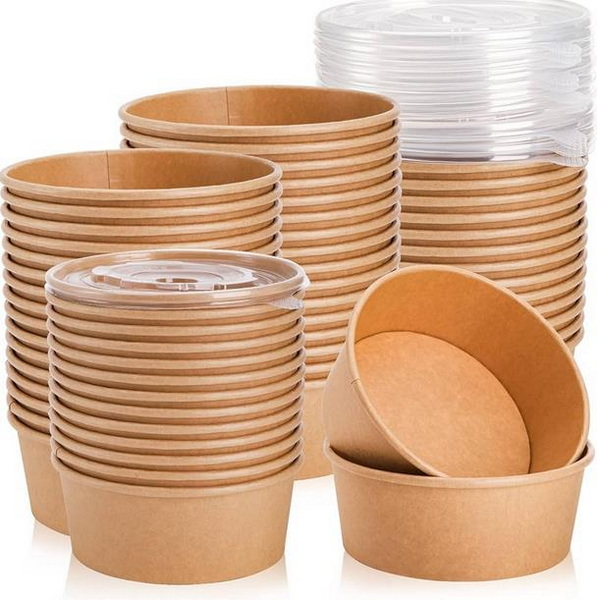
Content Menu
● Understanding Eco-Friendly Disposable Serving Bowls
>> Materials Used in Eco-Friendly Bowls
● Safety Standards and Regulations
>> Chemical Safety
● Are They Non-Toxic?
>> Testing for Toxins
● Health Implications
● Environmental Impact
● Practical Uses of Eco-Friendly Disposable Serving Bowls
● Consumer Awareness
● Conclusion
● FAQ
>> 1. What materials are used in eco-friendly disposable serving bowls?
>> 2. Are these bowls safe for hot foods?
>> 3. Do eco-friendly bowls contain BPA or phthalates?
>> 4. How long do these bowls take to decompose?
>> 5. Can I use eco-friendly disposable serving bowls for cold foods?
In recent years, the demand for eco-friendly disposable serving bowls has surged, driven by a growing awareness of environmental issues and health concerns related to traditional plastic tableware. This article delves into the safety and non-toxicity of large eco-friendly disposable serving bowls, exploring their materials, health implications, and environmental impact.

Understanding Eco-Friendly Disposable Serving Bowls
Large eco-friendly disposable serving bowls are typically made from sustainable materials such as bamboo, sugarcane bagasse, palm leaves, and recycled paper. These materials are chosen for their ability to break down naturally and reduce waste in landfills.
Materials Used in Eco-Friendly Bowls
- Bamboo: A fast-growing plant that is renewable and biodegradable. Bamboo bowls are sturdy and can handle both hot and cold foods. They are often treated with natural oils to enhance durability while maintaining their eco-friendly status.
- Sugarcane Bagasse: The fibrous residue left after extracting juice from sugarcane. It is compostable and can be used for various food types. Sugarcane bowls are lightweight yet robust enough to hold heavier dishes.
- Palm Leaves: Naturally fallen leaves that are cleaned and shaped into bowls. They are fully biodegradable and provide a unique aesthetic appeal. Palm leaf bowls have a rustic look that can enhance the presentation of food at events.
- Recycled Paper: Made from post-consumer waste, these bowls are often treated to resist moisture while remaining compostable. They are an excellent choice for dry foods or items that do not require high moisture resistance.
Safety Standards and Regulations
When it comes to food safety, eco-friendly disposable serving bowls must adhere to strict regulations set by health authorities. In many countries, these products are certified as safe for food contact if they meet specific criteria regarding chemical composition and manufacturing practices.
Chemical Safety
Many eco-friendly bowls are free from harmful chemicals such as:
- BPA (Bisphenol A): Often found in plastics, BPA can leach into food and has been linked to various health issues.
- Phthalates: Used to make plastics flexible, phthalates can also migrate into food.
Most manufacturers of eco-friendly disposable serving bowls ensure that their products do not contain these harmful substances, making them a safer choice for consumers.
Are They Non-Toxic?
The term "non-toxic" refers to the absence of harmful chemicals that can leach into food. Many large eco-friendly disposable serving bowls are marketed as non-toxic due to their natural materials and lack of synthetic additives.
Testing for Toxins
To verify the non-toxicity of these products, independent testing is often conducted. Look for certifications such as:
- FDA Approval: Indicates that the product meets safety standards for food contact.
- BPI Certification: Ensures that the product is compostable and made from safe materials.

Health Implications
Using large eco-friendly disposable serving bowls can have several health benefits compared to traditional plastic options:
- Reduced Risk of Chemical Exposure: By choosing non-toxic materials, consumers lower their risk of exposure to harmful chemicals.
- Hygienic Options: Single-use bowls eliminate the risk of cross-contamination associated with reusable dishes.
- Allergen-Free Choices: Many eco-friendly serving bowls are made without common allergens such as gluten or nuts, making them a safer option for gatherings where allergies may be a concern.
Environmental Impact
The environmental benefits of using large eco-friendly disposable serving bowls are significant:
- Biodegradability: These products break down naturally within months, reducing landfill waste. Unlike traditional plastics that can take hundreds of years to decompose, eco-friendly options contribute to soil health as they break down.
- Sustainable Sourcing: Many manufacturers use materials sourced from sustainably managed forests or agricultural waste. This practice supports local economies while minimizing deforestation and habitat destruction.
- Lower Carbon Footprint: By utilizing renewable resources, these bowls contribute less to greenhouse gas emissions compared to traditional plastic production. The production processes often involve less energy consumption and fewer toxic byproducts.
Practical Uses of Eco-Friendly Disposable Serving Bowls
Large eco-friendly disposable serving bowls are versatile and suitable for various occasions:
- Catering Events: Ideal for outdoor weddings, parties, or corporate events where convenience is essential without compromising on style or sustainability.
- Food Trucks and Festivals: Perfect for vendors looking to provide environmentally friendly options while maintaining food safety standards.
- Picnics and Family Gatherings: Easy cleanup after meals makes them a popular choice for casual dining experiences without the hassle of washing dishes.
- Meal Prep Services: Many meal delivery services use eco-friendly disposable serving bowls to package meals sustainably while ensuring freshness and safety.
Consumer Awareness
As consumers become more conscious of their choices, it's essential to understand what constitutes a truly eco-friendly product. Here are some tips:
- Research Brands: Look for companies committed to sustainability through ethical sourcing practices and transparent supply chains.
- Read Labels Carefully: Ensure that the products you choose have certifications indicating they meet safety standards for food contact.
- Consider Composting Options: If you have access to composting facilities, choose products that will break down efficiently in those systems rather than ending up in landfills.
Conclusion
In conclusion, large eco-friendly disposable serving bowls offer a safe and non-toxic alternative to traditional plastic options. Made from sustainable materials and free from harmful chemicals, they provide both health benefits and environmental advantages. As consumers become more conscious of their choices, these bowls represent a step towards a more sustainable future while ensuring safety in food service settings.

FAQ
1. What materials are used in eco-friendly disposable serving bowls?
Eco-friendly disposable serving bowls are typically made from bamboo, sugarcane bagasse, palm leaves, or recycled paper.
2. Are these bowls safe for hot foods?
Yes, many eco-friendly disposable serving bowls are designed to withstand high temperatures and are safe for hot foods.
3. Do eco-friendly bowls contain BPA or phthalates?
Most eco-friendly disposable serving bowls are free from BPA and phthalates, making them a safer choice for food contact.
4. How long do these bowls take to decompose?
The decomposition time varies by material but generally ranges from 60 days to several months in composting conditions.
5. Can I use eco-friendly disposable serving bowls for cold foods?
Absolutely! These bowls are suitable for both hot and cold foods.

















